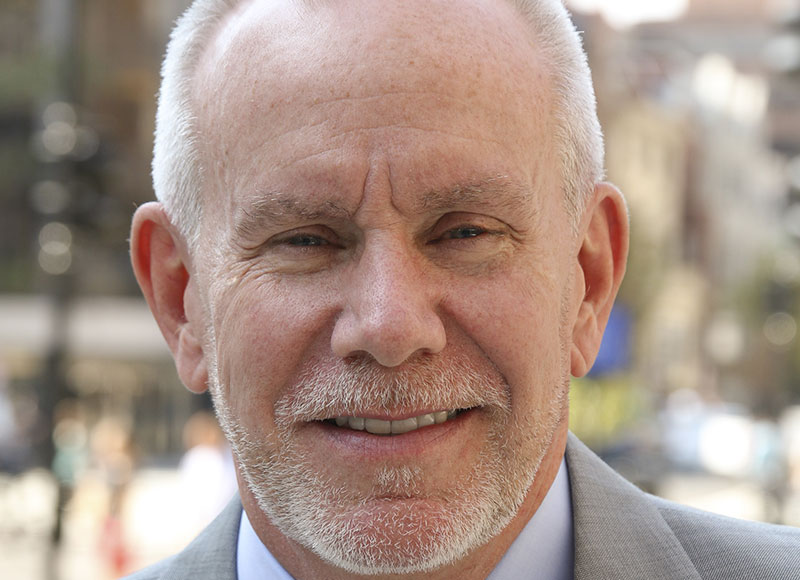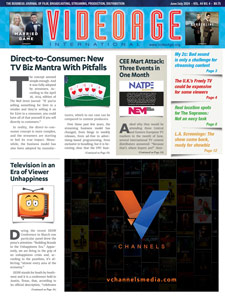In advance of the in-person return of Las Vegas’s NAB Show, to be held April 23-27, 2022, VideoAge asked Chris Brown, executive vice president and managing director of the Washington, D.C.-based NAB Global Connections and Events, four of the most important issues facing broadcasting today.
The questions were:
*Unfair competition with unregulated Social Media.
*The inaccuracy of ratings.
*Whether the NAB has a position about the role of broadcasting during an emergency. Considering that analog technology is more reliable than digital technology and the Internet during emergency situations (nuclear explosions or hackers, for example), are contingency plans being developed?
*The pros and cons of TV stations moving from terrestrial frequencies to broadband.
Here’s what Brown had to say.
“Among the topics NAB President and CEO Curtis LeGeyt will discuss in his State-of-the-Industry address are the Big Tech giants’ role as gatekeepers, their dominating influence over the advertising marketplace and the need for legislation allowing news outlets to negotiate jointly for adequate compensation that will promote and protect local journalism.
Several sessions within the NAB Show conference will focus extensively on audience measurement and ratings. Featured speakers will include key executives from Nielsen, Edison Research, BIA, and the Media Rating Council. Topics include sizing the overall streaming TV audience, with a deep dive into the emerging FAST (Free Ad-Supported Streaming TV) marketplace, which include services like Tubi, Xumo, and Pluto. In another session, the Media Rating Council will offer insight into its accreditation processes and the recent controversies surrounding Nielsen’s undercounting of both national and local TV audiences during the COVID-19 pandemic.”
About the emergency role of broadcasting, Brown explained that “broadcasting is an indelible part of the dissemination of life-saving information during times of emergency, and that is a role TV broadcasters have continued to embrace as they unite analog and digital technologies. The next-gen TV standard not only has unlocked innovative picture and sound features for consumers, but it also enables broadcasters to incorporate more informative, interactive, and in-depth alerting into their services. The technology also allows people to access emergency information, even when the lights go out and wireless networks become congested.
And finally, with respect to the transition to an IP-based next-gen TV model, there will be opportunities to dig in on the subject both on and off the exhibit floor. The Broadcast Engineering and IT Conference will have several sessions devoted to Next Gen television, and on the floor the ATSC will once again have a presence to showcase the progress on the standard’s rollout.”
In addition, Brown spoke about what attendees should expect to see on the
“Three pillars — Create, Connect, and Capitalize — reflect how the industry exhibition floor. works and make it easier for every attendee to navigate the show and find what is most relevant to them. Create will be featured in the Central Hall and part of the North Hall; Connect will be the focus in the new West Hall; and Capitalize will find its home in the North Hall. The conference content will include a mix of new programming and legacy elements, but all will link back to the pillars.
A significant trend that we are putting an especially bright spotlight on is intelligent content. Representing what is essentially a fourth pillar at this year’s show, we are introducing a new section on the show floor dedicated to the technologies underpinning this rising trend. At its roots, the Intelligent Content area is all about data and the enormous influence it is having across the content creation and distribution chain.
There is also a focus on the evolution of 4K and 8K technology, the blending of cinematic with live television production techniques and all the tech that drives remote workflows. The whole move to virtual production has been greatly accelerated by the pandemic, and the industry has shown that there are effective and efficient ways to produce remotely.”
Finally, Brown touched on the safety measures taken during the convention against COVID infections:
“At present, our policy requires anyone attending the show to present either proof of vaccination or a negative test result to gain entry. Masks are recommended but not required. The latest details and information on these policies can be found on the NAB Show website.”
Other safety measures include various sanitization protocols implemented throughout the convention halls, a touchless registration and check-in process, and mechanisms for social distancing.
Audio Version (a DV Works service)










Leave A Comment